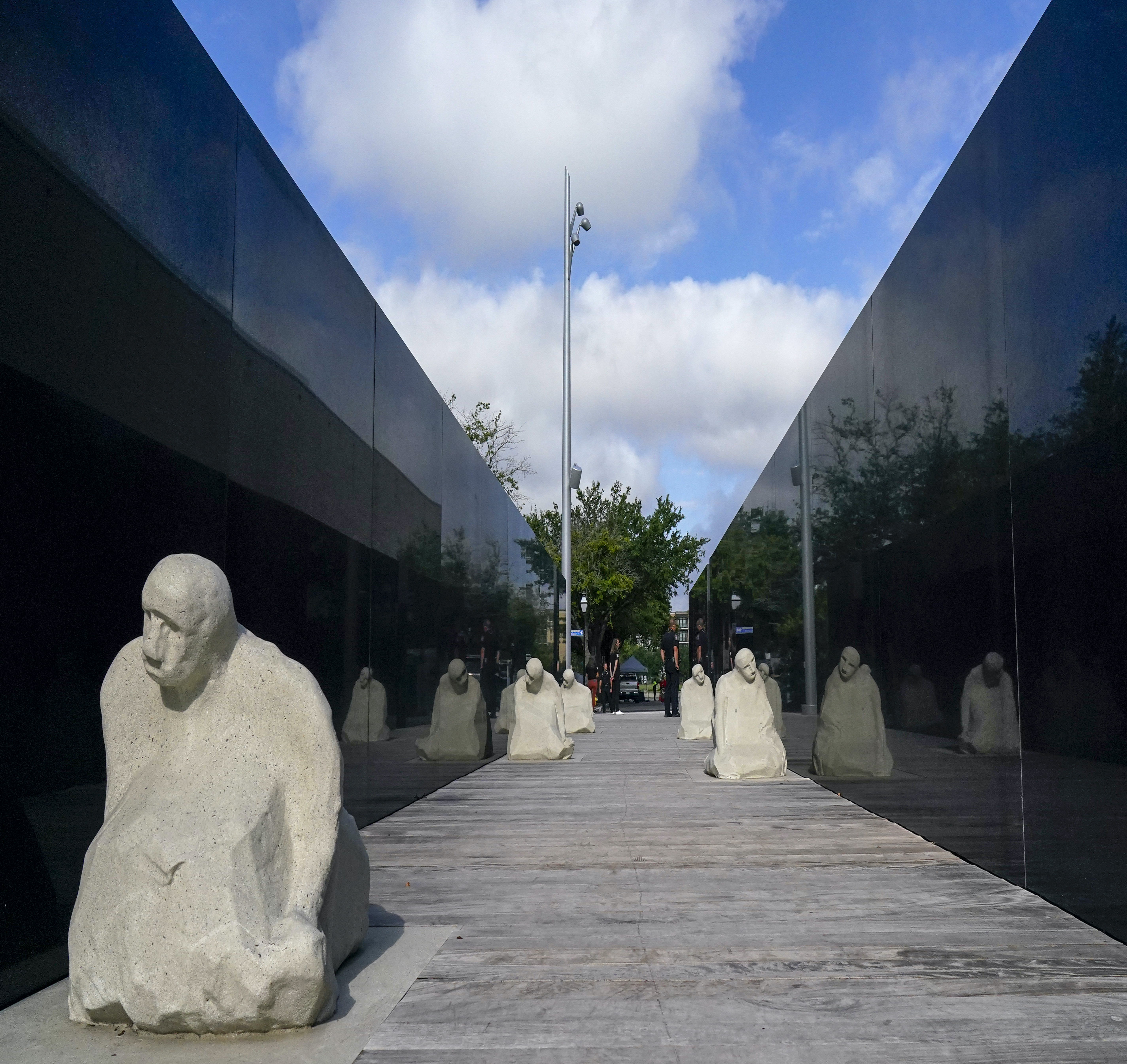CHARLESTON, S.C. (AP) — When the International African American Museum opens to the public Tuesday in South Carolina, it becomes a new site of homecoming and pilgrimage for descendants of enslaved Africans whose arrival in the Western Hemisphere begin on the docks of the Lowcountry coast.
Overlooking the old Wharf in Charleston at which nearly half of the enslaved population first entered North America, the 150,000-square-foot (14,000- square-meter) museum houses exhibits and artifacts exploring how African Americans’ labor, perseverance, resistance, and cultures shaped the Carolinas, the nation and the world.
It also includes a genealogy research center to help families trace their ancestors’ journey from the point of arrival on the land.
The opening happens at a time when the very idea of Black people’s survival through slavery, racial apartheid, and economic oppression being quintessential to the American story is being challenged throughout the U.S.
Leaders of the museum said its existence is not a rebuttal to current attempts to suppress history; but rather an invitation to dialogue and discovery.
“Show me a courageous space, show me an open space, show me a space that meets me where I am, and then gets me where I asked to go,” said Dr. Tonya Matthews, the museum’s president and CEO.
“I think that’s the superpower of museums,” she said. “The only thing you need to bring to this museum is your curiosity, and we’ll do the rest.”
The $120 million facility features nine galleries that contain nearly a dozen interactive exhibits of more than 150 historical objects and 30 works of art. One of the museum’s exhibits will rotate two to three times each year.
Upon entering the space, eight large video screens play a looped trailer of a diasporic journey that spans centuries, from cultural roots on the African continent and the horrors of the Middle Passage to the regional and international legacies that spawned out of Africans’ dispersal and migration across lands.
The screens are angled as if to beckon visitors to- wards large windows and a balcony at the rear of the museum, revealing sprawling views of the Charleston harbor.
One unique feature of the museum is its gallery dedicated to the history and culture of the Gullah Geechee people. Their isolation on rice, indigo, and cotton plantations in coastal South Carolina, Georgia, and North Florida helped them maintain ties to West African cultural traditions and the Creole language. A multimedia, chapelsized “praise house” in the gallery highlights the faith expressions of the Gullah Geechee and shows how those expressions are imprinted on Black American gospel music.
On Saturday, the museum grounds buzzed with excitement as its founders, staff, elected officials, and other invited guests dedicated the grounds in spectacular fashion.
The program was emceed by award-winning actress and director Phylicia Rashad and included stirring appearances by poet Nikky Finney and the McIntosh County Shouters, who perform songs passed down by enslaved African Americans.
“Truth sets us free — free to understand, free to re- spect, and free to appreciate the full spectrum of our shared history,” said former Charleston Mayor Joseph Riley, Jr., who is widely credited for the idea to bring the museum to the city.
Planning for the International African American Mu- seum dates back to 2000 when Riley called for its creation in a State of the City address. It took many more years, through setbacks in fundraising and changes in museum leadership, before construction started in 2019.
Originally set to open in 2020, the museum was further delayed by the coronavirus pandemic, as well as by issues in the supply chain of materials needed to complete construction.
Gadsden’s Wharf, a 2.3-acre waterfront plot where it’s estimated that up to 45% of enslaved Africans brought to the United States in the late 18th and early 19th centuries walked, sets the tone for how the museum is experienced. The wharf was built by Revolutionary War figure Christopher Gadsden., …
Thank you for reading Aaron Morrison article on scoopnewsusa.com. For more on “At International African American Museum opening, a reclaiming of sacred ground for enslaved kin”, please subscribe to SCOOP USA Media. Print subscriptions are $75 and online subscriptions (Print, Digital, and VIZION) are $90. (52 weeks / 1 year).


